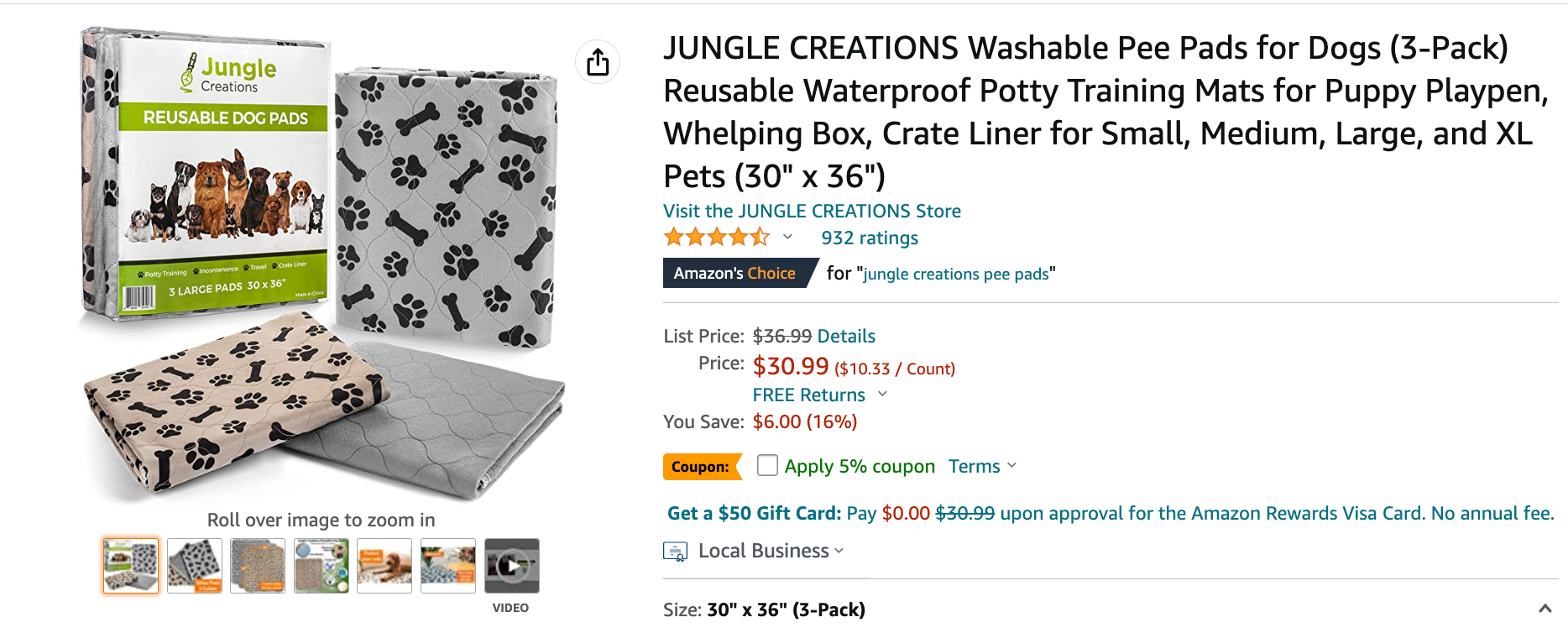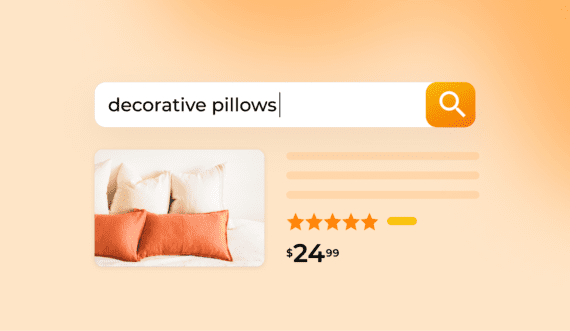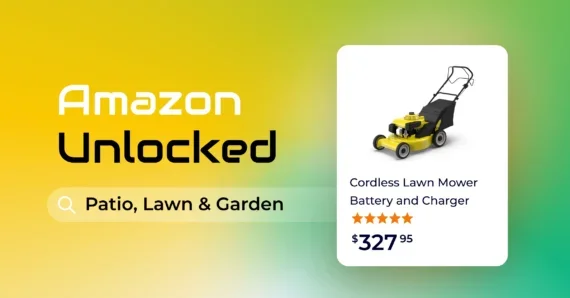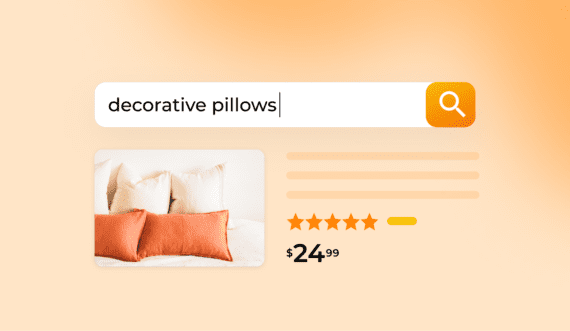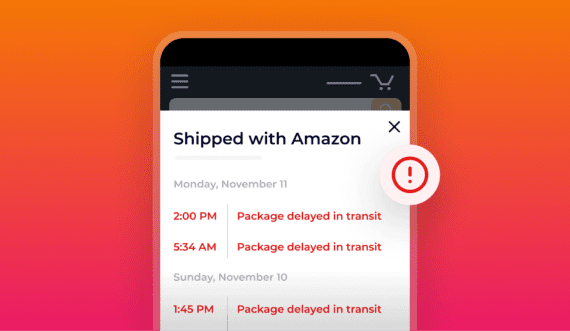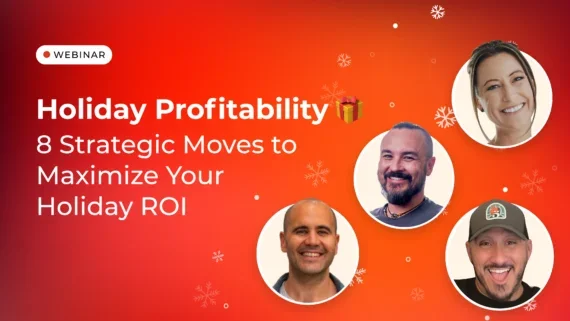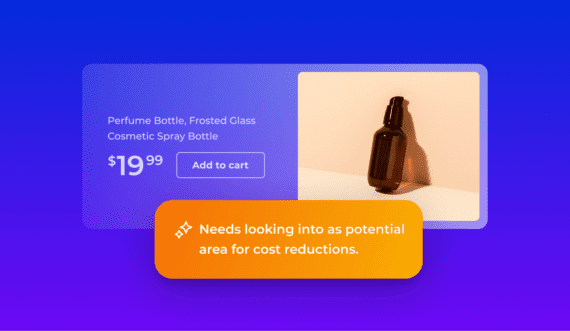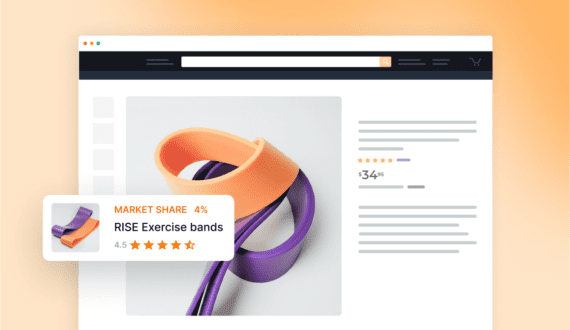Finding the right product to sell on Amazon is key to finding success on the site. But even if you’re selling the perfect, high-demand product, an optimized Amazon product listing is what’s going to drive sales and take your business to the next level.
In a recent Jungle Scout study among more than 1,000 Amazon sellers, nearly 80% are prioritizing optimizing their Amazon listings with relevant, high-quality keywords.
However, for many, that Amazon listing optimization is no easy task; whether they’re experienced sellers or not, the majority said that they find creating an optimized listing challenging.
So, to help sellers understand how to build the best possible listing, we’re analyzing existing Amazon products to show you what they’re doing right and what they can do to improve.
Amazon listing optimization with Jungle Scout
To start, we’ll need product examples with decent demand that we evaluate. We’re using Jungle Scout’s Product Database to find products using the following criteria:
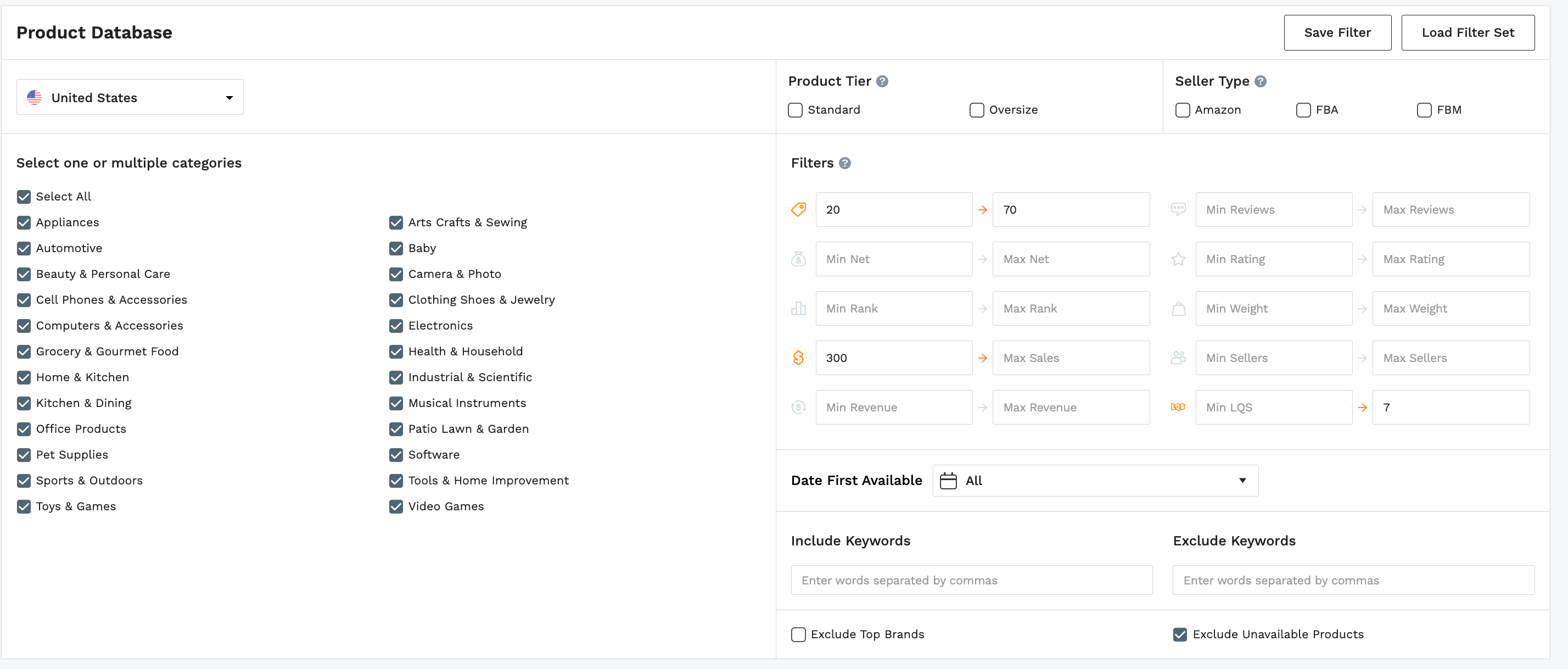
First, I chose the United States from the “Amazon Marketplaces” dropdown. Next, for “Categories,” I checked “Select All.”
Finally, for the filters, I opted to:
- Price. Set the “Price” minimum to $20 and maximum to $70
- Minimum sales. Make the minimum sales 300 (I left the max filter blank)
- LQS. ix the Listing Quality Score (LQS) minimum as zero and maximum as seven
These parameters help us find products in a competitive range where we know we have the opportunity to make improvements.
Once the database generated results, I found a listing that is in need of improvements: Pet Housebreaking Pad
Let’s begin by taking a look at what gets your product in front of potential buyers: your listing’s title.
Writing an optimized Amazon product title
When working on Amazon listing optimization, the product title is so important because its keywords tell Amazon’s A9 algorithm exactly what your product is, and whether or not the item is what your buyers are looking for.
In other words, it’s all about relevancy.
And though there’s an ongoing debate regarding the optimal number of keywords and characters to include in a listing’s product title, Amazon allows up to 200 characters for most categories, so our recommendation is to use as much of that real estate as possible!
Let’s take a look at the product we found in Jungle Scout’s Product Database to determine the effectiveness of its title.
The Pet Housebreaking Pad has an LQS – a real-time, data-driven rating of a product listing — of 3 out of 10, which is one of the lowest scores a listing can receive. After looking at the title, bullets, images, and description, it makes sense why the LQS is a 3.
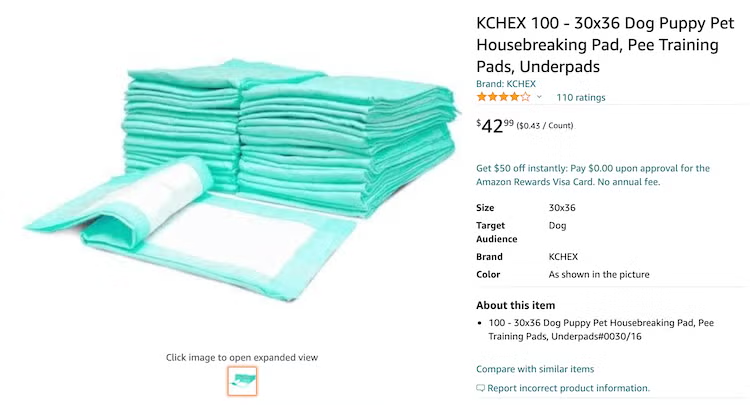
As you can see, the title is short and unclear, there is only one image, and the only bullet point is the same as the title. This seller is missing many opportunities to optimize this listing with compelling copy, relevant keywords, and eye-catching images.
With the number of competing dog pee pads on Amazon, shoppers likely won’t find this listing on the first page of their search results.
To better optimize this listing, let’s start with the title. The title is what will help your product rank higher in search and pull customers into the listing.
- Length. Right off the bat, I see that the title is very short — only 80 characters. Amazon allows up to 200 characters in the title so it’s best to use as much real estate as possible, without keyword stuffing, of course.
- Clarity. Second, the title is unclear. The first part says “KCHEX 100.” Is “KCHEX 100” the brand name or is it just “KCHEX”? I can only guess that the “100” means it comes with 100 pee pads — but it’s not totally clear. Whenever you are offering a multipack, make sure that is very clear in the title and the rest of your listing. Any confusion can cause a customer to click out of the listing.
Here’s an example of how I would write this product title:
KCHEX 30” x 36” Disposable Pet Housebreaking Pads (100-Pack) Potty Training Mats for Puppy, Adult Dogs – Crate Liner Underpads for Small, Medium, Large, and XL Pets
When writing your title, make sure to include:
- The product quantity
- Product size
- Important product features
- Who the product is for
A good Amazon product title:
To get an idea of what a good, high-performing title looks like, let’s check out Jungle Scout’s own Million Dollar Case study product: JUNGLE CREATIONS Washable Pee Pads for Dogs.
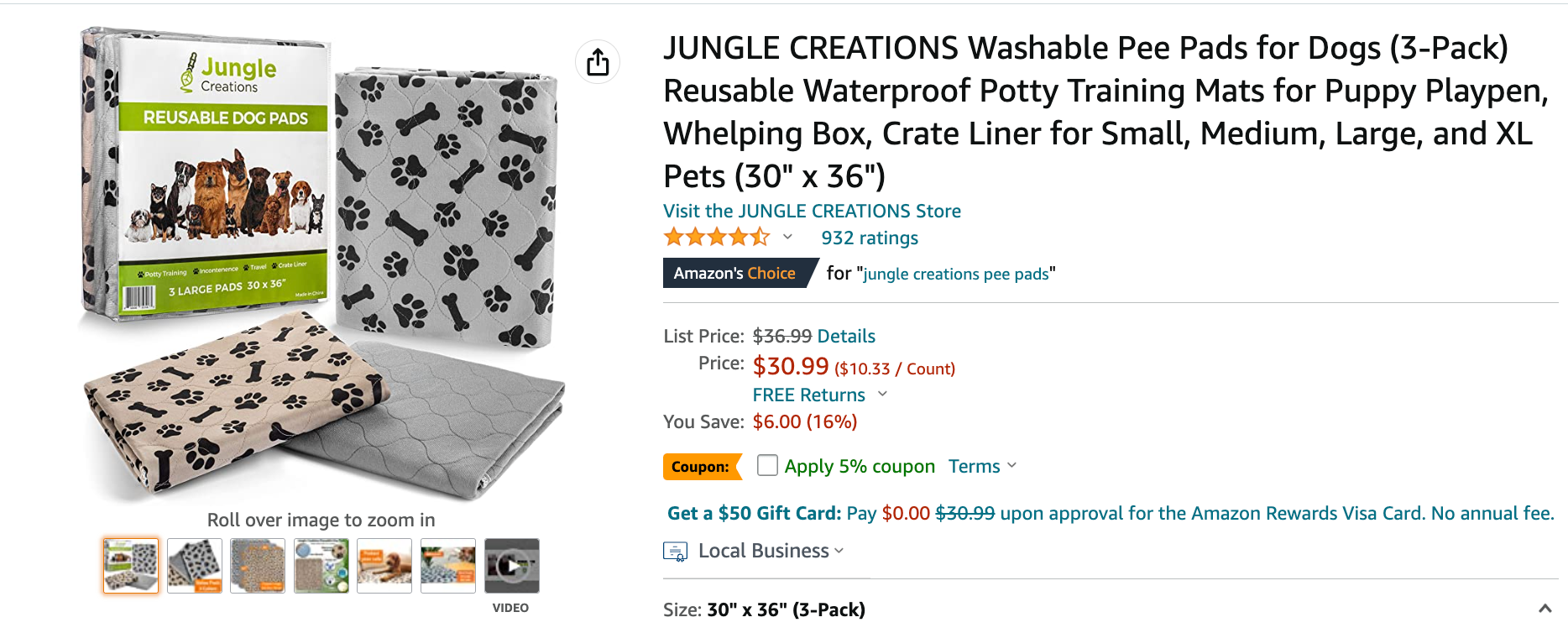
Immediately, you’ll notice that the main keywords are right at the start of the title, after the item’s brand name, followed by the quantity and size.
We have also used virtually all available characters (186 out of 200) while addressing the product’s main purpose (waterproof potty training mats), different use cases (for puppy playpen, whelping box, crate), benefits (washable, reusable, waterproof), and product specifics (for small, medium, large, and XL pets).
When writing your title, make sure you’re not repeating any keywords. Amazon has stated that you only need to mention a keyword once in a listing, and additional uses of the keyword don’t increase the value placed on the keyword. Moreover, as they note in their Terms of Service, keywords are matched to customer search queries using full or partial keyword overlap.
Writing optimized Amazon bullet points
After writing an optimized title, your next step is to focus on your bullet points, or key product features, in the backend of your Amazon detail page.
Amazon allows up to five bullet points and we suggest you use all of that space, as it is more opportunity to include relevant keywords and provide compelling details about your product.
In the first product example, the seller simply copied and pasted the title onto the bullet point section. Doing this is pointless — it does not provide the customer with any more information about the product.
Tips for writing great Amazon bullet points:
- Point out the main feature or benefit in the first part of the bullet
- Follow through with a more detailed explanation
- Write about the product’s main feature and how it will benefit the customer
- Explain how your product helps solve the customer’s problem
- Include important product information such as quantity, sizing, colors, and materials
- Write compelling copy to convince the potential customer they need this product
- Don’t just say your product is higher quality, prove why it is
Before writing your title, make sure to understand Amazon’s product detail page rules.
Writing optimized Amazon product descriptions
The product description is located further down the product detail page and allows for additional space to speak about your product.
For this section, it is best to reiterate the features and benefits you wrote about in the bullet points, but in more detail, as you are allowed up to 2,000 characters in the description.
In the past, sellers would use HTML tags to break up paragraphs, bold text, and add bullet points. This is no longer allowed by Amazon, unfortunately.
Adding copy to the product description is still important as you can add relevant keywords and give your customers more details about your product and brand.
If you enrolled in the Brand Registry program, you’re able to create what’s called an A+ Content Description. This will replace your current description and you can add customized templates, large images, and more.
The right keywords (and how to find them) to make your listing rank
When it comes to keywords for our Amazon product listing, we need to think about their relevance and their cost.
With respect to relevance, we want the keywords in our titles to match the words shoppers use when searching for our type of product. This enables us to build a listing indexed for the keywords people use the most.
As for cost, we want to keep that as low as possible while still ranking for relevant keywords. This will be very important when we start running our pay-per-click (PPC) advertising campaigns.
How to find good keywords
The best way to find the right keywords for your product listing is by using a tool like Jungle Scout’s Keyword Scout.
With Keyword Scout, we can either search for keywords using our product type, or we can search our biggest competitors’ ASINs (Amazon Standardized Identification Number) to see which keywords they’re using.
Not only will Keyword Scout show us which keywords have the highest search volume and are ranking well for the product, it will also assign a relevancy score and estimated advertising costs to each keyword.
Leverage the power of Keyword Scout and gain a leg up on your competitor's product listings with Jungle Scout.
Once we’ve determined which keywords have the highest search volume, at a price we can afford advertising-wise, we can start building our Amazon product listing.
To make the next step of building your product listing even easier, add each keyword you would like to add to your product listing to the Keyword List within Jungle Scout.
You can then easily import your keyword list into our Listing Builder tool.
How to build a product listing that converts
Like Keyword Scout, Jungle Scout’s Listing Builder makes life as an Amazon seller easier, helping to create strong product detail pages that are more likely to convert.
With Listing Builder, you have the option to draft a new listing or sync your current Amazon listings from Seller Central.

To add the keywords you chose during your keyword search, simply pick your keyword list in the next step.
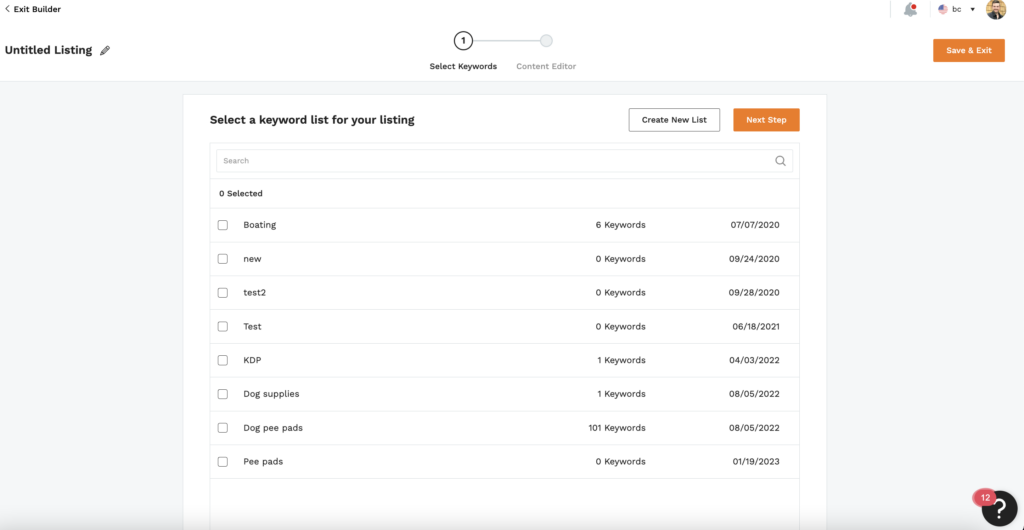
After choosing your keyword list, click on “Next Step,” and you will be brought to the content editor. Once in the editor, Listing Builder will sort your keywords by highest volume keywords, medium volume keywords, and lowest volume keywords.
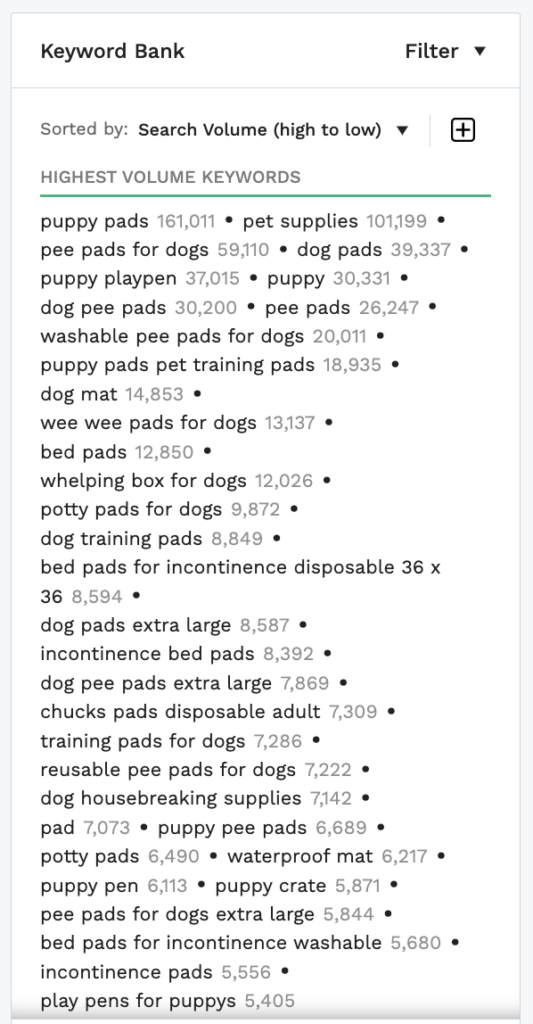
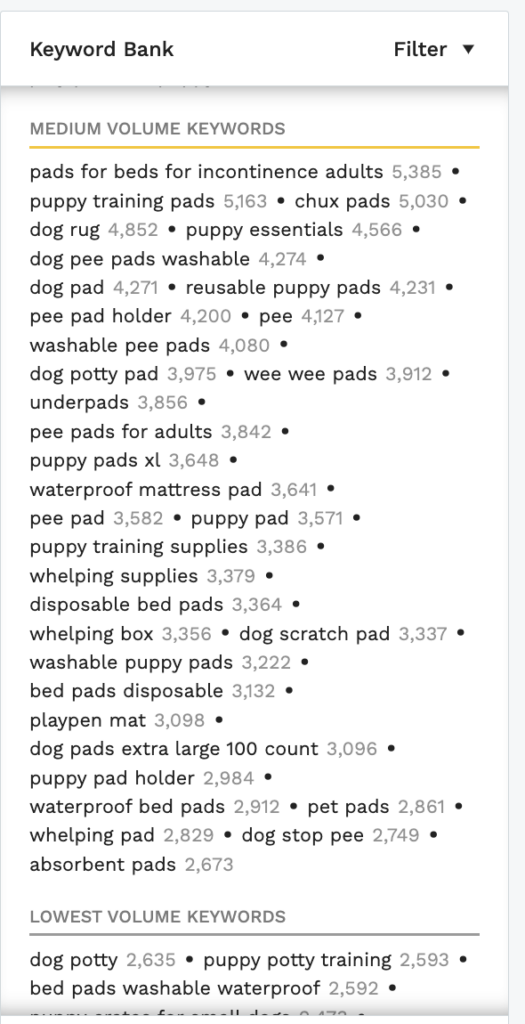
As you are writing and optimizing your listing, Listing Builder will automatically save your progress so you can pause and resume whenever needed.
 Listing builder will also show you your Listing Optimization Score, a data-driven metric created by Jungle Scout. This real-time grade measures product title, description, key features, keywords, images, and more so you have instant live feedback to adjust your listing.
Listing builder will also show you your Listing Optimization Score, a data-driven metric created by Jungle Scout. This real-time grade measures product title, description, key features, keywords, images, and more so you have instant live feedback to adjust your listing.
The higher the score, the better the listing. And if we get a low score, we can change and rearrange our keywords until we get the high score we want.
On top of that, Listing Builder also shows you the potential monthly search volume of your listing as you add keywords.
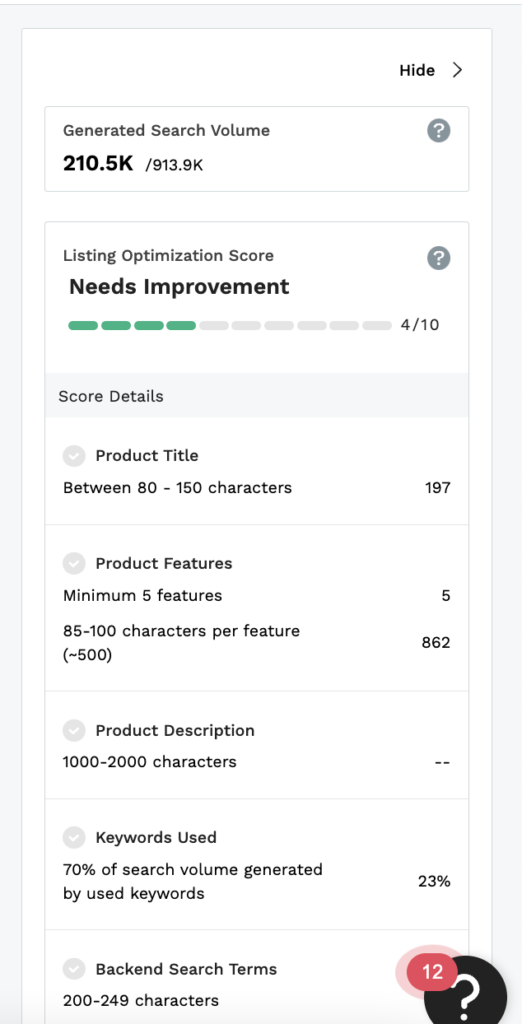
Listing Builder will grade our edits in real-time, making it simple to figure out what’s working and what’s not.
Plus, if our Jungle Scout account is synced to our Amazon Seller Central account, moving new product listings to Amazon happens with the click of a button (it works for existing product listings too!).
Tips for writing effective Amazon product listing titles:
- Prioritize your main keywords at the front of your product title and address the main product benefits and features in a concise manner.
- If there are multiple uses or customer niches for your product and they can be included in your product title — add them. That will increase the likelihood of your product appearing in customer search queries.
- Use Keyword Scout to find relevant keywords for your product. You can look for keywords based on the type of product you’re selling, or you can look for the keywords your competitor uses with a reverse-ASIN lookup.
- After you have chosen the keywords for your title, you can use Jungle Scout’s Listing Builder to figure out the best way to use those keywords.
Amazon listing optimization: Images
Whereas your product title gets your item in front of potential customers, and your bullet points help sell your product, it’s your product photography — specifically, your main image — that will get those shoppers to click through Amazon’s search results to your actual listing.
January 31, 2024 Update: Images from multiple selling partners to be displayed on product pages.
“Effective January 31, product detail pages for hardlines product types may display images from multiple selling partners to help customers make informed purchase decisions.
Each product detail page should have at least three required images: one with the product on a white background, one with the product in an environment, and one with size and fit information.
Previously, product detail pages displayed images from one selling partner.
With this change, if required images are missing from the product detail page, images from multiple selling partners or Amazon will be added when available.
To remove an incorrect image, contact Selling Partner Support.”
Amazon will consider brand ownership and licensing rights when selecting a seller’s images. This should be a motivation for all third party sellers, including those who have brands enrolled in Brand Registry, to ensure their listings are fully optimized and include at least the 3 required images.
Of course, all sellers should have 6 images and a product video on each of their private label listings.
However, if you sell a private label product and are the only seller on the listing, you shouldn’t worry about this update.
Image requirements
Along with a number of other requirements, Amazon stipulates that main product images must be at least 1000 pixels on the longest side and 500 pixels on the shortest side in order to be zoomable, but recommends they be 1600px or larger on the longest side for optimal zoom experience.
KCHEX does not meet that requirement, as their one and only image is low-quality and not zoomable. When hiring a photographer for your product images, make sure they produce high-quality photos that meet Amazon’s requirements.
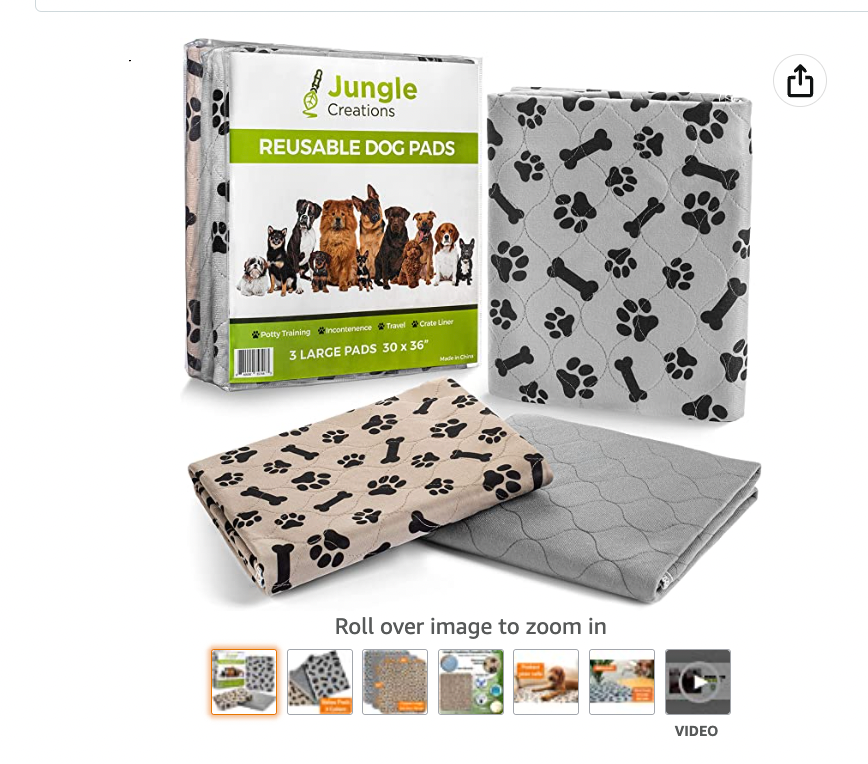
Here are all of Amazon’s image guidelines:
Listings that are missing a main image will not appear in search or browse until you fix the listing.
Choose images that are clear, information-rich, and attractive.
Images must meet the following requirements:
- Images must accurately represent the product that is for sale.
- Images must match the product title.
- Product must fill at least 85% of the image.
- The optimal zoom experience for detail pages requires files to be 1600px or larger on the longest side. Zoom has been shown to help enhance sales. If you are unable to meet this requirement, the smallest your file can be for zoom is 1000px, and the smallest your file can be for the site is 500px.
- Images must not exceed 10,000px on the longest side.
- Images must be JPEG (.jpg or .jpeg), TIFF (.tif), PNG(.png), or GIF (.gif) file formats. JPEG is preferred. Our servers do not support animated .gifs.
- Images must not be blurry, pixelated, or have jagged edges.
- Images must not contain nudity or be sexually suggestive. Leotards, underwear, and swimwear for kids and baby must not be shown on a human model.
- Images must not include any Amazon logos or trademarks, or variations, modifications or anything confusingly similar to Amazon’s logos and trademarks. This includes, but is not limited to, any words or logos with the terms AMAZON, PRIME, ALEXA, or the Amazon Smile design.
- Images must not include any badges used on Amazon, or variations, modifications or anything confusingly similar to such badges. This includes, but is not limited to, “Amazon’s Choice,” “Premium Choice,” “Amazon Alexa,” “Works with Amazon Alexa,” “Best seller,” or “Top seller”. Refer to trademark usage guidelines for more details.
Lastly, though Amazon allows up to six images (including video demonstrations), there is only one image on the KCHEX listing.
Instead, KCHEX could take a close-up of the actual product, to give the potential customer a better idea of how it works, the type of material used, and the craftsmanship.
It would also be helpful to show potential buyers what it looks like from different angles. Because shoppers can’t determine any of this information from the two pictures on the listing, it’s extremely likely that they’ll move on to a competitor with more descriptive photos.
We also recommend creating infographics and lifestyle images to point out specific features and show the product in action.
Good product images
For examples of great Amazon product images, check out our Jungle Creations Washable Pee Pads for Dogs listing.

The size of each image is in line with Amazon’s TOS and we’ve taken full advantage of the number of photos allowed per listing: six visuals, and one video.
Each secondary image is colorful and informative, showing the customer exactly what this product offers.
Amazon product photography tips for your listing:
- Amazon allows you to upload seven images (six, plus your main photo); we strongly recommend using all seven slots. Even if you have a simple product, show the product at different angles, including packaging, close-ups, lifestyle shots, explanatory graphics, etc.
- Make sure your image is at least 1000 pixels on the longest side, as that’s what enables the hover-to-zoom function. It’s an extremely helpful feature that allows customers to get a better sense of your product quality. And this can increase your conversions.
- Use images to help explain your product to those who won’t take the time to read your product description. Think of your customers’ biggest objections and/or questions, and address them in a graphic.
- Split test your main image to see which generates more clicks and conversions.
Getting positive Amazon product reviews
After utilizing Amazon listing optimization on your title and images, you’ll need to focus on getting great Amazon product reviews. And because positive feedback from previous customers helps new shoppers understand the value of your product, getting good ratings early on is key.
Here are a few things to help you get those all-important reviews:
- Make a good product! This one might seem like a no-brainer, but if you create a quality product that fixes the flaws and pain points of your competitors’ products, you’ll receive fewer negative reviews.
- Let Amazon take the wheel. Amazon sends a follow-up email requesting a review after the sale is made. And if that doesn’t work…
- Hit the ‘Request a Review’ button. Amazon allows you to send a one-time request for a review straight from your ‘Order’ page. And if sending requests one at a time is too tedious, you can use Jungle Scout’s Extension to send bulk review requests.
- Use Jungle Scout’s Review Automation. This tool sends out automated review request emails for each order you receive. All you have to do is turn the feature on and let Review Automation do the rest. You no longer need to manually request a review for each order!
Let’s take a look at the Washable Pee Pad reviews:
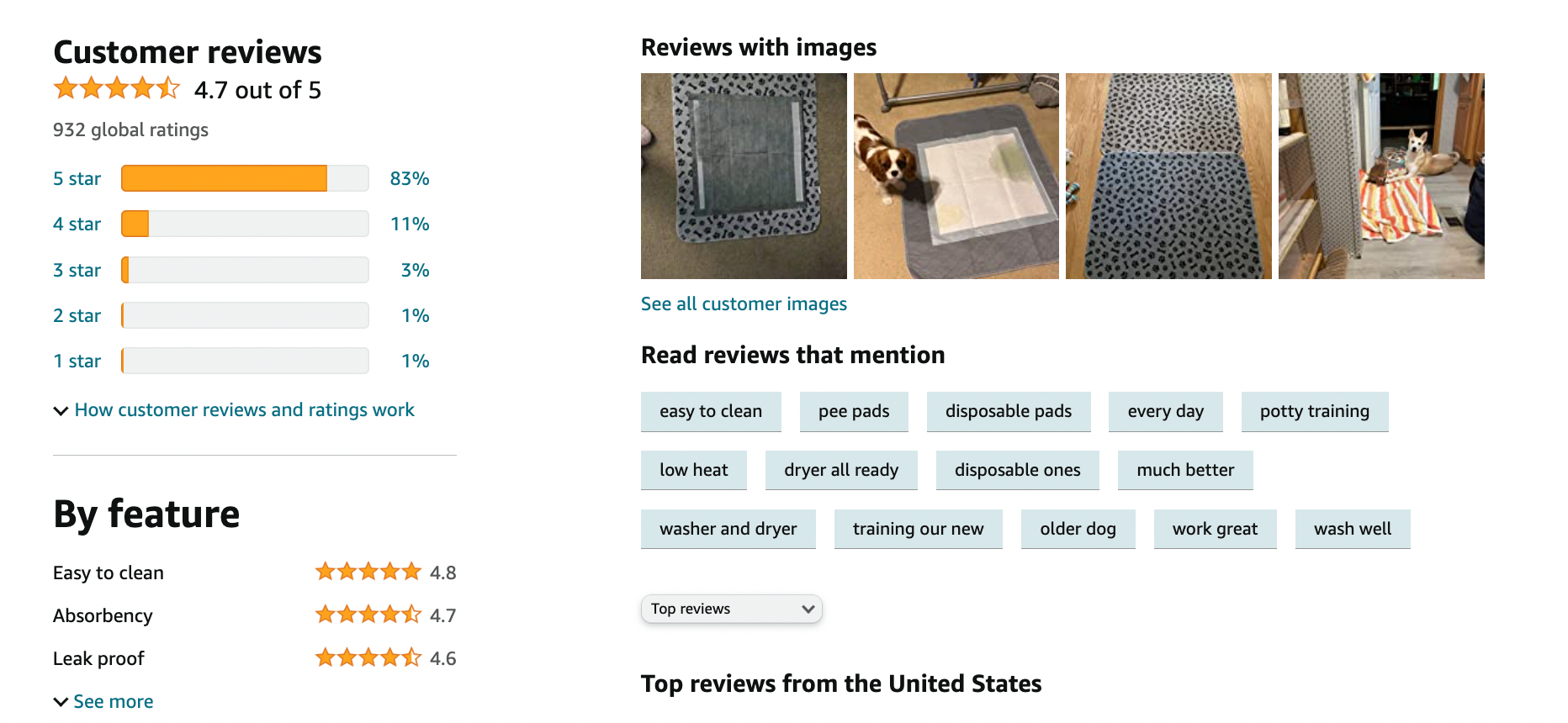
By using Review Automation, we were able to gain over 400 reviews on the Washable Pee Pad listing in less than one year! While not every customer will leave a review after receiving a review request email, you will get many more reviews than if you did nothing at all.
As this listing has gained more (positive) reviews, it has also helped our Best Seller Rank increase as potential customers are influenced by the social proof they see from previous customers.
Seller feedback vs. product reviews
Just to clarify, product reviews and seller feedback are different, serving very different purposes. And, most importantly, since Fulfillment by Amazon (FBA) sellers don’t pick, pack, or ship their own products (and unlike product reviews), any negative feedback they might receive would likely be Amazon’s fault.
In that case, when feedback is given for something beyond our control as sellers, we can open a ticket with Amazon to have it removed.
Take these tips and run with them!
Listings will make us or break us as Amazon sellers, which means investing the time to make it the best it can be is extremely important.
So, now that you know what to do to optimize your listings, take a look around the Amazon landscape and dissect the listings of top sellers. Watch for emerging trends and patterns, and make sure you’re employing best practices for our product pages.
And if you’d like to learn more about keyword research and automating your listing optimization, check out Jungle Scout.
Brian Connolly is an Amazon seller, ecommerce expert, and writer for Jungle Scout. He lives in the New Jersey Shore area with his wife and cat. When he isn’t writing advice online for aspiring and experienced Amazon sellers for Jungle Scout, he spends his free time boating, fishing, and selling boating-themed items on his Amazon business.

